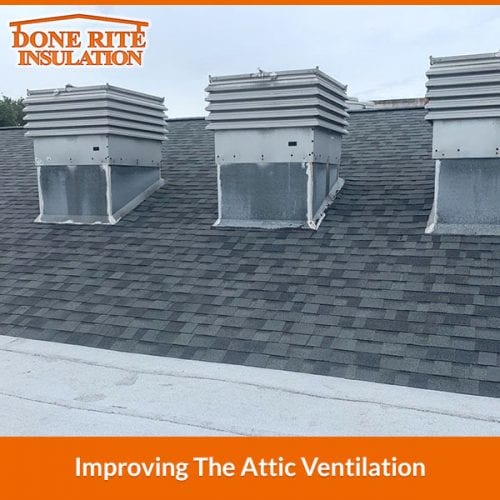 Low-quality attic ventilation forces your air conditioner to work harder and can lead to condensation inside the attic. It is also responsible for reducing the lifespan of the roof. Luckily there are several ways available for improving attic ventilation and some of them can be inexpensive and can be undertaken as DIY projects. Every effort for the attic insulation is based on the fact that hot air will rise. The basic idea is to allow this hot air to escape from the top of the roof. It paves the way for cooler air to enter the house from below. Several options can be used to achieve this. Let’s see them.
Low-quality attic ventilation forces your air conditioner to work harder and can lead to condensation inside the attic. It is also responsible for reducing the lifespan of the roof. Luckily there are several ways available for improving attic ventilation and some of them can be inexpensive and can be undertaken as DIY projects. Every effort for the attic insulation is based on the fact that hot air will rise. The basic idea is to allow this hot air to escape from the top of the roof. It paves the way for cooler air to enter the house from below. Several options can be used to achieve this. Let’s see them.
1. Intake vents: The intake vents can be found along the house soffit. This is a horizontal wood surface below the eaves. It improves the attic ventilation by the development of a draft of air coming inside the attic from the lowest location available on the roof. The only problem with the soffit vents is that the insulation between the rafters many times blocks the flow of air into them. This means you have to go inside the attic to correct the issue.
2. Exhaust vents: A natural complement for the intake vents is the exhaust vents. These kinds of vents improve attic ventilation by the release of the air that is sucked in via soffit vents from the rooftop and developing a continuous airflow.
3. Fans: If you use a combination of intake and exhaust vents, it will use natural forces for driving the hot air out of the home and decrease condensation. But the solar-powered or electric fans will improve the ventilation performance a great deal. The fans may be installed together with the roof vents and gable vents. Fans can be bought in the form of a combined unit along with a vent or it can be added separately to some existing vents. These fans are typically installed in the attic space and they are protected from external elements. There is a downside to adding fans though. Not only does it cost more but there is an additional monthly costing of electricity involved in operating them. You will also need a licensed electrician for connecting the fans to the house wiring.
Keep this in mind while doing the attic insulation
One of the major concerns while installing attic ventilation is your safety. There are some simple methods for verifying whether the attic ventilation is sufficient. You can spot the vents in the roof and eaves while inspecting these sections of the roof by walking around the house. Check the ridge vent which runs along the length of the roof peak. Also, check the ceiling below the attic to verify whether it feels hot. It is possible to inspect other surfaces such as rafters during the winter months to check the frost or moisture on it. Visual inspection can also spot issues in the roof exterior such as gaps in the ducts and pipes, problems with bath and kitchen fans, or vents situated on one side of the house.
You will need to ensure that you have sufficient vents in the attic. You will need to have one sq. ft. vent for every 150 sq. ft. of the roof. If you are not comfortable with the DIY procedures for attic insulation and want to know whether fans will benefit the attic insulation you are ready to talk to professionals. If you are living in the Clearwater, FL area you can consult Done Rite Insulation. They have several years of experience in attic insulation on their side. Call them today for an appointment.









